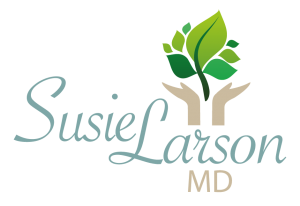It is challenging to keep up with evolving information on a day-to-day basis, perhaps even more so during a pandemic. The goal of this post is to provide you with a resource that can help you understand the risks associated with the environments you frequent. Erin Bromage, PhD, from the University of Massachusetts Dartmouth, has written a series of posts that put the science of the COVID-19 pandemic into lay language. Here is some content from his posts that I find the most useful in terms of understanding the risk associated with various situations.
Where do people become infected?
We know most people get infected in their own home. A household member contracts the virus in the community and brings it into the house where sustained contact between household members leads to infection.
Where do people get the virus in the community?
Indoor spaces, with limited air exchange or recycled air and lots of people, are concerning from a transmission standpoint.
How much exposure do you need to become infected?
In order to get infected you need to get exposed to an infectious dose of the virus…. it appears that only small doses may be needed for infection to take hold. Some experts estimate that as few as 1000 SARS-CoV2 infectious viral particles are all that will be needed. Please note, this still needs to be determined experimentally, but we can use that number to demonstrate how infection can occur. Infection could occur, through 1000 infectious viral particles you receive in one breath or from one eye-rub, or 100 viral particles inhaled with each breath over 10 breaths, or 10 viral particles with 100 breaths. Each of these situations can lead to an infection.
Social distancing rules are really to protect you with brief exposures or outdoor exposures. In these situations there is not enough time to achieve the infectious viral load when you are standing 6 feet apart or where wind and the infinite outdoor space for viral dilution reduces viral load. The effects of sunlight, heat, and humidity on viral survival, all serve to minimize the risk to everyone when outside.
Successful Infection = Exposure to Virus x Time
Where are the personal dangers from reopening?
It all relates to population density and air exchange within the space. IE the number of people, the size of the space, and the degree to which air can flow through the space.
When assessing the risk of infection (via respiration) at the grocery store or mall, you need to consider the volume of the air space (very large), the number of people (restricted), how long people are spending in the store (workers – all day; customers – an hour). Taken together, for a person shopping: the low density, high air volume of the store, along with the restricted time you spend in the store, means that the opportunity to receive an infectious dose is low. But, for the store worker, the extended time they spend in the store provides a greater opportunity to receive the infectious dose and therefore the job becomes more risky.
Basically, as the work closures are loosened, and we start to venture out more, possibly even resuming in-office activities, you need to look at your environment and make judgments. How many people are here, how much airflow is there around me, and how long will I be in this environment. If you are in an open floorplan office, you really need to critically assess the risk (volume, people, and airflow). If you are in a job that requires face-to-face talking or even worse, yelling, you need to assess the risk.
If you are sitting in a well ventilated space, with few people, the risk is low. If I am outside, and I walk past someone, remember it is “dose and time” needed for infection. You would have to be in their airstream for 5+ minutes for a chance of infection. While joggers may be releasing more virus due to deep breathing, remember the exposure time is also less due to their speed. Please do maintain physical distance, but the risk of infection in these scenarios are low.
Airline travel during this time seems worrying, and before going ahead you have to assess all factors into determining whether you fly or not. If you are in the high risk group for developing severe COVID-19 symptoms, then despite all the precautions you and the airline can take, it is unwise to get on a plane.
What is the role of asymptomatic people in spreading the virus?
Symptomatic people are not the only way the virus is shed. We know that at least 44% of all infections–and the majority of community-acquired transmissions–occur from people without any symptoms (asymptomatic or pre-symptomatic people). You can be shedding the virus into the environment for up to 5 days before symptoms begin.
Remember the Formula: Successful Infection = Exposure to Virus x Time
As we are allowed to move around our communities more freely and be in contact with more people in more places more regularly, the risks to ourselves and our family are significant. Even if you are gung-ho for reopening and resuming business as usual, do your part and wear a mask to reduce what you release into the environment. It will help everyone, including your own business.
